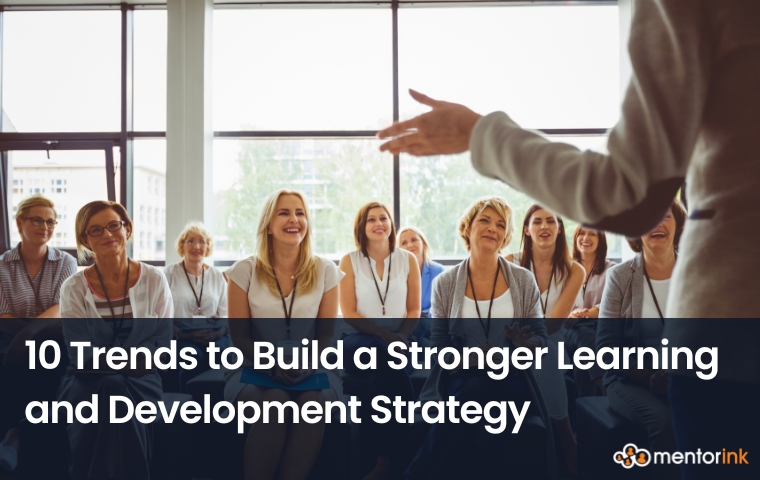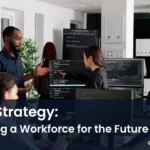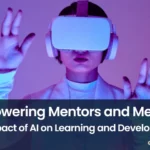
Learning and development has come a long way. The old days of dull training sessions and clunky e-learning platforms are behind us. In 2025, L&D is sharper, more specialized, and built to make a real difference. Whether you are starting from scratch or updating your current strategy, staying on top of the latest trends can give you a serious edge.
Modern learners expect flexibility, engagement, and real-world application. On the other hand, businesses that meet these expectations are seeing stronger performance, better retention, and more motivated teams. Learning and development strategy is no longer just a support function but it is a strategic driver of growth and innovation. If you want to learn more about the definition of learning and development strategy you can look our blog content “L&D Strategy: Building a Workforce for the Future“.
10 Trends That Change Your Learning and Development Strategy
Learning and development is not just about chasing every shiny new thing. It can be considered as being intentional with your strategy. By focusing on personalization, flexibility, and continuous improvement, you are not just checking boxes; you are creating a culture where people genuinely want to learn and grow.
AI-Powered Personalized Learning Paths
Artificial intelligence is changing everything, and L&D is no exception. With AI tools, companies can now create hyper-personalized learning experiences based on an employee’s role, skill level, and career goals in order to increase learning and development strategy.
Instead of pushing generic training modules, you can recommend courses tailored to individual performance data, learning style, and progress. This not only improves engagement but also speeds up the learning process, because people learn better when content actually makes sense for them. If you want to learn more deeper about relationships between AI and L&D you can read our blog content about “Empowering Mentors and Mentees: The Impact of AI on Learning and Development.”
Microlearning for Maximum Retention
Big concepts delivered in tiny chunks. This can be considered the magic of microlearning. You may think of short videos, interactive quizzes, book summaries or flashcards that employees can consume in under 10 minutes. Also, add text to video (captions or short on-screen callouts) to highlight key takeaways and improve retention.
The idea is simple: when information is delivered in bite-sized formats, it is easier to absorb and recall later. Plus, microlearning fits into a busy schedule, whether your team is working remotely or hustling in the office.
Remote and Hybrid Learning Environments
Remote work is not a pandemic fad; it still continues. So it only makes sense that learning follows suit. Companies are now designing training experiences that cater to a distributed workforce.
That means a mix of live virtual sessions, asynchronous courses, discussion forums, and digital collaboration tools. Done right, remote learning can be just as impactful, if not more, than in-person training.
Upskilling and Reskilling on a Continuous Loop
Technology is evolving so fast that today’s skills might be obsolete tomorrow. That’s why smart organizations are not just training; they are upskilling and reskilling continuously.
Upskilling focuses on helping employees improve current skills, while reskilling prepares them for entirely new roles. Both are essential in a world where job descriptions change faster than LinkedIn updates.
Learning in the Flow of Work
People do not want to stop what they’re doing to learn. They want to learn while they work. Here comes “learning in the flow of work,” where employees receive training that is directly integrated into the tools they use on a daily basis.
For example, salesforce has built-in learning modules, and Microsoft Teams can integrate short training videos. That way, employees do not need to leave their workflow to upskill.
Gamification Is Not Just for Fun-It Is a Strategy
Games tap into our natural desire to achieve and compete, which is why gamification is so effective in L&D. It turns learning into a more engaging experience by adding points, badges, leaderboards, or levels.
And it is not just for frontline employees. Executives and managers respond well to gamified learning too, especially when it includes rewards or social recognition.
Social and Collaborative Learning is Back in Style
Learning is better together. Whether it is peer-to-peer coaching, mentoring, or employee-led webinars, social learning is all about sharing knowledge.
Data-Driven Decision Making in L&D
If you cannot measure it, you cannot improve it. Modern L&D teams are leaning into analytics to understand what’s working and what’s not.
By tracking things like course completion rates, quiz performance, and engagement metrics, you can fine-tune your strategy and make better investments.
Some platforms even offer predictive analytics, showing you who might need extra help or which training boosts performance the most.
Soft Skills Are the New Power Skills
In 2025, technical know-how will get you in the door, but soft skills will take you further. You can take into consideration of thinking communication, emotional intelligence, problem-solving, and adaptability.
Organizations are now prioritizing these so-called “soft skills” because they are harder to teach but critical for leadership, collaboration, and resilience.
Sustainability and Purpose-Driven Learning
Today’s employees want to learn with purpose. In other words, align your training with values like sustainability, social impact, and diversity.
More employees now expect their companies to invest in training that not only benefits the business but also contributes to the greater good.


